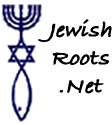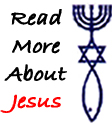






![]()
As people arrived at the Temple Mount with their Passover lambs, which could range in age from eight days to one year old, they awaited the opening of the temple courtyard doors. The priests then permitted the people to enter the courtyard and divided the crowd into three groups. As the first group entered, the gates were closed behind them and the shofar (rams horn) was sounded. The stones of the altar and the ramp leading to the altar, as well as the Temple sanctuary itself, had been whitewashed with plaster just for this occasion. The sight of the sparkling clean Temple must have been magnificent.(1)
The people then killed their animals, and a priest caught the blood of the sacrifice in a basin. Other priests were standing in two lines. Those in one line carried silver basins, and those in the second line carried gold basins. As the first priest passed the blood filled basin to the next priest in line, he received an empty basin in return. This exchange continued on down the line until the last priest tossed the blood on the altar, (the altar may have had a red line around its middle that separated sacrificial blood tossed above the line from that tossed below the line, as may have been the practice at Passover). All of the priests involved in this procedure wore scarlet robes so, in the event of an accidental spill, the blood on their clothing would not be noticed.(1)
After the sacrifice, the animals were taken by their owners and hung on hooks in the walls and pillars. If all the hooks were in use, men held staves between their shoulders, and the carcasses were hung from staves. The lambs were then flayed and taken home to be roasted. As the Passover lambs were slain, the Levite's sang for each incoming group a collection of psalms called the Hallel (Ps. 113-118).(1)
Each lamb was slaughtered in the name of the mitzvah - commandment - attaching lofty spiritual import to the act. The slaughtering was performed in a strictly proscribed manner designed to minimize any pain caused to the animal. The slaughtering was done in shifts, within the confines of the Temple Courtyard. Between shifts, the priests completely washed down the Courtyard, maintaining the cleanliness and the dignity appropriate to the Holy Temple. The animal in its entirety was to be eaten. Each lamb was designated to be eaten by predetermined groups. The groups were based on family units. The poor, or people without families, were assigned by the elders to the predetermined groups. No one was allowed to be absent from the Passover meal, on what has come to be known as the Seder night. No one was allowed to go hungry.(2)
On the Hebrew Calendar date of Iyar 14 it was a tradition that in the times of the Holy Temple, those who had become ritually impure would get a second chance to offer their Pascal Sacrifice on this day.(3)
Learn more about The Holiday Of Passover.
In 2007 the Re-established Sanhedrin Court purchased a herd of sheep to symbolically prepare to return to this practice once the Third Temple is in place.
Information for this article came from an excerpt from the book below.
1). The Feast of Israel by Bruce Scott of Friends of Israel ministries.
2). The Temple Institute. (March 9-2007 Newsletter)
3). The Jewish Art Calendar by Lubavitch Chabad of Peoria 5764 (2004)